Glasgow Necropolis

The Glasgow Necropolis, a 37-acre Victorian garden cemetery, rises on a prominent hill beside Glasgow Cathedral, offering sweeping views over the city. Established in 1833 by the Merchants’ House of Glasgow, it was inspired by the grand cemeteries of Paris and designed as a “City of the Dead” where architecture, sculpture, and landscape combine in striking harmony. Around 50,000 people are buried here, commemorated by some 3,500 monuments ranging from modest headstones to elaborate mausoleums by leading architects such as Alexander “Greek” Thomson. At its summit stands the 1825 statue of Protestant reformer John Knox, predating the cemetery itself. Visitors enter via the ornate Bridge of Sighs, once the route of funeral processions, and can explore winding paths rich in symbolism, artistry, and history. Today, the Necropolis is both a place of remembrance and a remarkable outdoor museum, reflecting Glasgow’s industrial wealth, cultural ambition, and enduring respect for its past.
Glasgow ScotlandGlasgow Necropolis is a sprawling Victorian cemetery located on a prominent hill on the eastern edge of Glasgow city centre, just behind Glasgow Cathedral and St Mungo’s Museum of Religious Life and Art, with the main entrance accessible from Castle Street. Established in the early 1830s and modelled on Paris’s Père Lachaise Cemetery, the Necropolis spans 37 acres and contains about 3,500 elaborate monuments and over 50,000 burials, serving as the final resting place for many of Glasgow’s notable historical figures. Its winding paths climb up the hill towards the John Knox Monument at the summit, offering panoramic views of the city skyline. Nearby landmarks include the richly historic Glasgow Cathedral, the Merchants' House, and the vibrant Merchant City district with shops, cafes, and cultural venues. The Necropolis is open daily from early morning until dusk and is a significant heritage site and popular destination for those interested in history, architecture, and hauntingly beautiful landscapes.
 Kelvingrove Art Gallery and Museum
Glasgow
Kelvingrove Art Gallery and Museum
Glasgow
 Riverside Museum
Glasgow
Riverside Museum
Glasgow
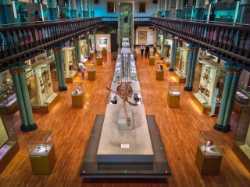 Hunterian Museum
Glasgow
Hunterian Museum
Glasgow
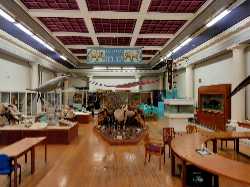 The Hunterian Zoology Museum
Glasgow
The Hunterian Zoology Museum
Glasgow
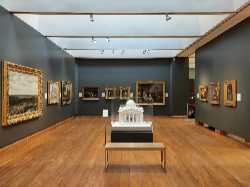 The Hunterian Art Gallery
Glasgow
The Hunterian Art Gallery
Glasgow
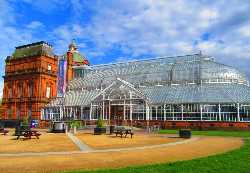 People’s Palace and Winter Gardens
Glasgow
People’s Palace and Winter Gardens
Glasgow
 Glasgow Police Museum
Glasgow
Glasgow Police Museum
Glasgow
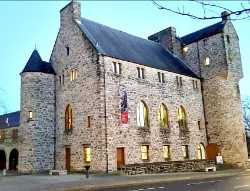 St. Mungo Museum of Religious Life and Art
Glasgow
St. Mungo Museum of Religious Life and Art
Glasgow
 The Tenement House
Glasgow
The Tenement House
Glasgow
 Scottish Football Museum
Glasgow
Scottish Football Museum
Glasgow
 Fairfield Heritage
Glasgow
Fairfield Heritage
Glasgow
 Theatre Royal Glasgow
Glasgow
Theatre Royal Glasgow
Glasgow
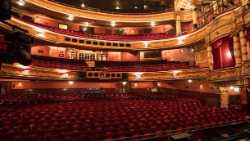 Glasgow King’s Theatre
Glasgow
Glasgow King’s Theatre
Glasgow
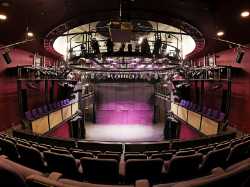 Tron Theatre
Glasgow
Tron Theatre
Glasgow
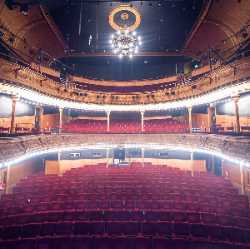 Citizens Theatre
Glasgow
Citizens Theatre
Glasgow
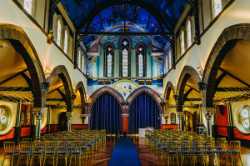 Òran Mór
Glasgow
Òran Mór
Glasgow
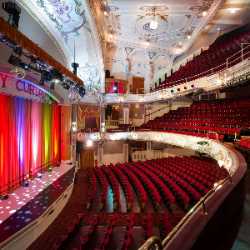 Pavilion Theatre
Glasgow
Pavilion Theatre
Glasgow
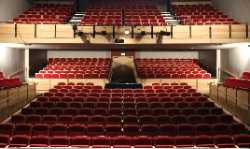 Webster’s Theatre
Glasgow
Webster’s Theatre
Glasgow
 Eastwood Park Theatre
Glasgow
Eastwood Park Theatre
Glasgow
 Cottiers Theatre
Glasgow
Cottiers Theatre
Glasgow
 Platform Theatre
Glasgow
Platform Theatre
Glasgow
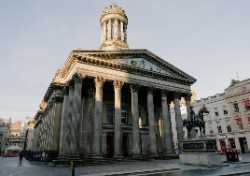 Gallery of Modern Art
Glasgow
Gallery of Modern Art
Glasgow
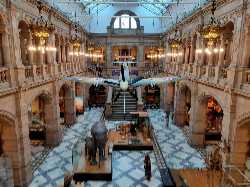 Kelvingrove Art Gallery
Glasgow
Kelvingrove Art Gallery
Glasgow
 Compass Gallery
Glasgow
Compass Gallery
Glasgow
 Roger Billcliffe Gallery
Glasgow
Roger Billcliffe Gallery
Glasgow
 The Modern Institute
Glasgow
The Modern Institute
Glasgow
 Transmission Gallery
Glasgow
Transmission Gallery
Glasgow
 Trongate 103
Glasgow
Trongate 103
Glasgow
 Project Ability Gallery
Glasgow
Project Ability Gallery
Glasgow
 Glasgow Print Studio
Glasgow
Glasgow Print Studio
Glasgow
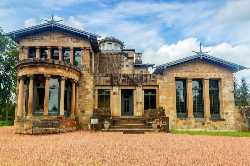 Holmwood House
Glasgow
Holmwood House
Glasgow
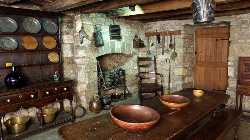 Provand’s Lordship
Glasgow
Provand’s Lordship
Glasgow
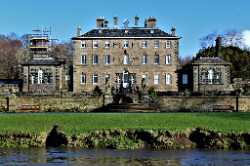 Pollok House
Glasgow
Pollok House
Glasgow
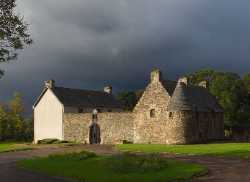 Provan Hall
Glasgow
Provan Hall
Glasgow
 House for an Art Lover
Glasgow
House for an Art Lover
Glasgow
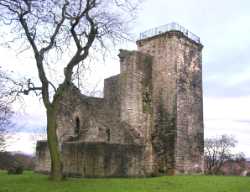 Crookston Castle
Glasgow
Crookston Castle
Glasgow
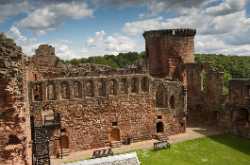 Bothwell Castle
Glasgow
Bothwell Castle
Glasgow
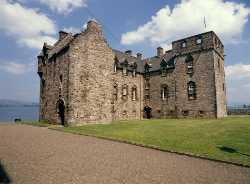 Newark Castle
Glasgow
Newark Castle
Glasgow
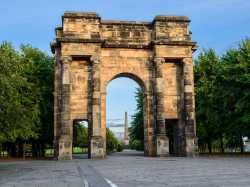 Glasgow Green
Glasgow
Glasgow Green
Glasgow
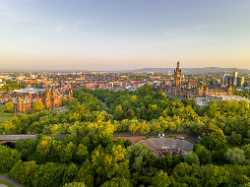 Kelvingrove Park
Glasgow
Kelvingrove Park
Glasgow
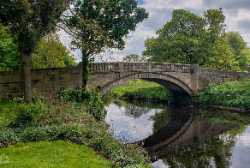 Pollok Country Park
Glasgow
Pollok Country Park
Glasgow
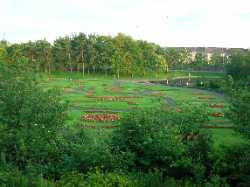 Victoria Park Glasgow
Glasgow
Victoria Park Glasgow
Glasgow
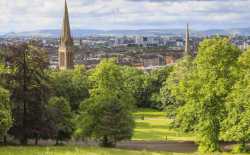 Queens Park
Glasgow
Queens Park
Glasgow
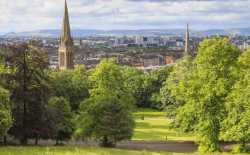 Rouken Glen Park
Glasgow
Rouken Glen Park
Glasgow
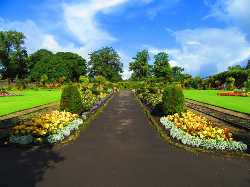 Bellahouston Park
Glasgow
Bellahouston Park
Glasgow
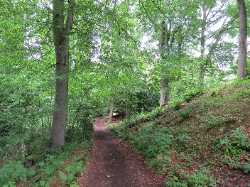 Linn Park
Glasgow
Linn Park
Glasgow
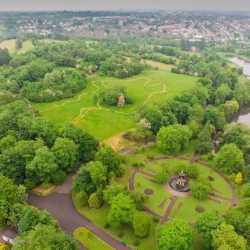 Glasgow Alexandra Park
Glasgow
Glasgow Alexandra Park
Glasgow
 Springburn Park
Glasgow
Springburn Park
Glasgow
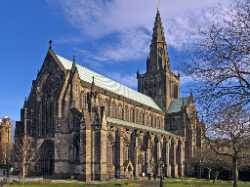 Glasgow Cathedral
Glasgow
Glasgow Cathedral
Glasgow
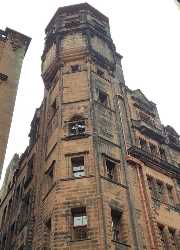 The Lighthouse
Glasgow
The Lighthouse
Glasgow
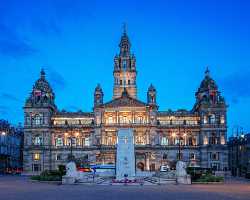 City Chambers
Glasgow
City Chambers
Glasgow
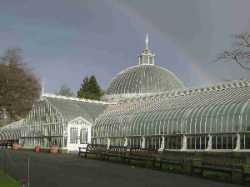 Glasgow Botanic Gardens
Glasgow
Glasgow Botanic Gardens
Glasgow
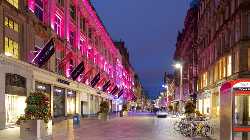 Buchanan Street
Glasgow
Buchanan Street
Glasgow
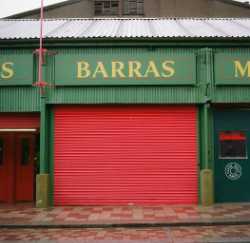 Barras Market
Glasgow
Barras Market
Glasgow
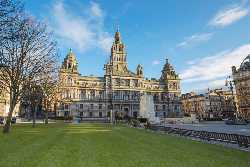 George Square
Glasgow
George Square
Glasgow
 Glasgow Science Centre
Glasgow
Glasgow Science Centre
Glasgow
 Clyde Arc
Glasgow
Clyde Arc
Glasgow
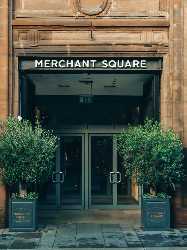 Merchant Square
Glasgow
Merchant Square
Glasgow